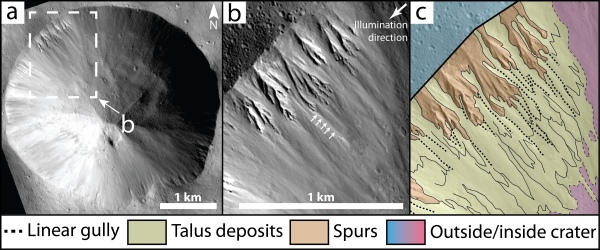Post contributed by Jennifer Scully, Dept. of Earth, Planetary & Space Sciences, University of California Los Angeles
Vesta is the second most massive asteroid in the asteroid belt, with a mean diameter of 526 km (e.g. Russell et al., 2012). High resolution images from the Dawn Mission have detected curvilinear and linera gully forms and lobate deposits in craters and on steep slopes on its surface (Scully et al., 2015).





